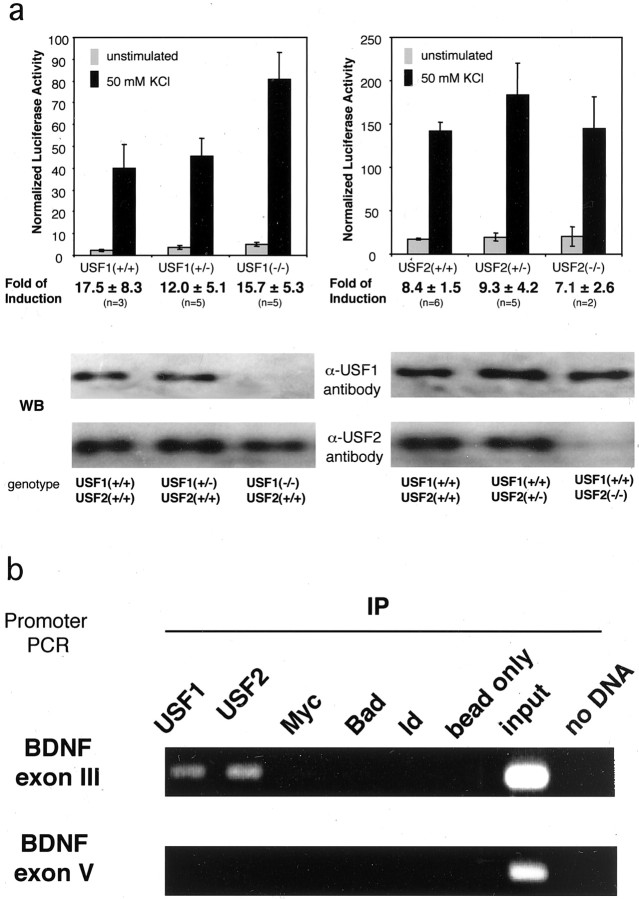Fig. 4.
Endogenous USF1 and USF2 regulateBDNF promoter III in vivo.a, USF 1 and USF2 are both capable of regulating the Ca2+-inducible activation of BDNFpromoter III. E16 cortical neurons were obtained from USF1 and USF2 wild-type, heterozygous, or homozygous null mice and cultured in vitro for 3 d before transfection with theBDNF promoter III luciferase reporter. nrepresents the number of pups used for the measurement. The genotypes for the mice were determined by Southern blot analysis. Western blot analysis shows the relative amounts of USF1 and USF2 in nuclear extracts from USF1 and USF2 wild-type, heterozygous, and homozygous mice with antibodies specific to the USF1 and USF2 proteins.b, Endogenous USF1 and USF2 bind BDNFpromoter III in vivo. Cultured E18 + 5 DIV rat cortical neurons were treated with formaldehyde to cross-link DNA binding proteins to chromatin and then were subjected to chromatin immunoprecipitation with antibodies specific to USF1 and USF2 or a number of control antibodies. After reversing cross-links, we subjected eluted genomic DNA fragments to PCR with primers specific toBDNF promoter III or BDNF exon V. One percent of the input of the sheared chromatin before immunoprecipitation was used as a positive control for the PCR reaction. Negative controls include antibodies against c-Myc (a transcription factor), Bad (a cytoplasmic protein), Id (a bHLH protein lacking a DNA binding domain), or beads only.

